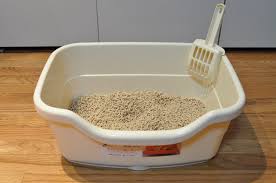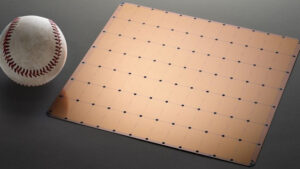The Ultimate Guide to Cat Litter Boxes: Everything You Need to Know
place to relieve itself. A cat litter box is an essential item in your home, and understanding its various aspects can help you choose the best option for your cat and your lifestyle. In this comprehensive guide, we will explore the different types of litter boxes, the benefits they offer, maintenance tips, common problems, and troubleshooting advice.
1. Understanding Cat Litter Boxes
A cat litter box is a container designed for cats to urinate and defecate in, typically filled with an absorbent material known as cat litter. Providing a designated spot for your cat to do its business helps maintain hygiene in your home and gives your cat a sense of security.
1.1 Importance of a Litter Box
Cats are creatures of habit, and having a reliable and comfortable litter box is crucial for their well-being. A suitable litter box can:
- Encourage Proper Elimination: Cats instinctively want to bury their waste, and a litter box allows them to do this comfortably.
- Prevent Accidents: A clean and appealing litter box reduces the likelihood of cats eliminating outside the box, which can be a common issue for cat owners.
- Support Health Monitoring: Regular cleaning of the litter box allows owners to monitor their cat’s health by observing changes in litter color, consistency, and quantity.
2. Types of Cat Litter Boxes
There are several types of litter boxes available on the market, each with its pros and cons. Understanding these options can help you choose the best fit for your cat.
2.1 Open Litter Boxes
Open litter boxes are basic, shallow containers without a lid or cover. They are easy for cats to access and clean.
Pros:
- Easy to clean and maintain.
- Inexpensive and widely available.
Cons:
- Can lead to litter scatter outside the box.
- Odors may escape more easily.
2.2 Covered Litter Boxes
Covered litter boxes come with a lid or top that helps contain odors and litter. Some have a flap entrance for added privacy.
Pros:
- Helps contain odors and keeps litter inside.
- Provides a sense of privacy for cats.
Cons:
- Can trap odors if not cleaned regularly.
- Some cats may feel confined and avoid using them.
2.3 Self-Cleaning Litter Boxes
Self-cleaning litter boxes use a mechanism (like a rake) to automatically sift through the litter and remove waste after each use.
Pros:
- Reduces the frequency of cleaning.
- Helps maintain a clean environment for the cat.
Cons:
- Higher initial cost.
- Mechanical failures can occur.
2.4 Disposable Litter Boxes
These are typically made from biodegradable materials and can be thrown away after use. They are convenient for travel or temporary setups.
Pros:
- No need for cleaning, just dispose of it.
- Eco-friendly options are available.
Cons:
- Not cost-effective for long-term use.
- Limited durability.
2.5 Litter Box Furniture
Litter box furniture is designed to hide the litter box within a piece of furniture, such as an end table or cabinet.
Pros:
- Aesthetically pleasing and can blend with home decor.
- Helps contain odors and litter.
Cons:
- Can be difficult to clean thoroughly.
- May not provide enough ventilation.
3. Choosing the Right Litter Box
When selecting a litter box for your cat, consider the following factors:
3.1 Size
Ensure the litter box is large enough for your cat to turn around comfortably. A general rule of thumb is that the box should be one and a half times the length of your cat. If you have multiple cats, consider getting one box per cat, plus one extra.
3.2 Accessibility
If you have a senior cat or one with mobility issues, opt for a box with lower sides for easier access. Avoid boxes that are too tall or have high entrances.
3.3 Location
Place the litter box in a quiet, low-traffic area where your cat feels safe. Avoid placing it near their food and water dishes, as cats prefer their bathroom space separate from their eating area.
3.4 Number of Boxes
As a rule of thumb, have one litter box for each cat, plus one extra. This helps prevent territorial disputes and encourages proper elimination.
4. Choosing the Right Litter
Selecting the right cat litter is just as important as choosing the right box. There are various types of litter available:
4.1 Clay Litter
Bentonite Clay: This is the most common type of litter, known for its absorbency and clumping ability.
Pros:
- Highly absorbent.
- Controls odors well.
Cons:
- Dusty and may cause respiratory issues.
- Non-biodegradable.
4.2 Crystal Litter
Made from silica crystals, this litter absorbs moisture and controls odors effectively.
Pros:
- Low dust and low maintenance.
- Long-lasting.
Cons:
- Can be uncomfortable for some cats.
- More expensive than traditional clay litters.
4.3 Biodegradable Litter
Made from natural materials like corn, wheat, or recycled paper, biodegradable litters are eco-friendly options.
Pros:
- Environmentally friendly.
- Often less dusty.
Cons:
- May not clump as well as clay litters.
- Can be more expensive.
4.4 Recycled Paper Litter
This type of litter is made from recycled paper and is gentle on paws.
Pros:
- Low dust and highly absorbent.
- Safe for kittens and cats with respiratory issues.
Cons:
- Not as effective at controlling odors.
- May not clump.
4.5 Wood Pellets
Made from compressed sawdust, wood pellet litter is another eco-friendly option.
Pros:
- Naturally absorbs moisture and controls odors.
- Biodegradable.
Cons:
- May not clump.
- Some cats may not like the texture.
5. Maintaining Your Cat Litter Box
To ensure your cat’s litter box remains clean and inviting, follow these maintenance tips:
5.1 Regular Cleaning
- Daily Scooping: Scoop out waste daily to prevent odors and encourage your cat to continue using the box.
- Complete Change: Replace all litter and clean the box with mild soap and water every 1-2 weeks, depending on the number of cats and type of litter used.
5.2 Liner Options
Some litter boxes come with liners to make cleaning easier. However, some cats may dislike using a lined box. If your cat is hesitant, consider removing the liner.
5.3 Odor Control
- Baking Soda: Sprinkle baking soda at the bottom of the litter box before adding litter to help control odors.
- Activated Charcoal: Consider using activated charcoal products designed to absorb odors.
6. Troubleshooting Common Litter Box Issues
Despite your best efforts, you may encounter problems with your cat’s litter box usage. Here are some common issues and their solutions:
6.1 Refusal to Use the Litter Box
If your cat suddenly stops using the litter box, it could be due to various factors:
- Medical Issues: Health problems like urinary tract infections can cause litter box aversion. Consult your veterinarian if you suspect a medical issue.
- Box Cleanliness: Cats are clean animals and may refuse to use a dirty box. Ensure regular cleaning and maintenance.
- Stress or Anxiety: Changes in the household, such as moving or new pets, can cause stress. Provide a calm environment and a safe space for your cat.
6.2 Litter Box Aggression
Some cats may exhibit aggression towards other cats when using the litter box. Solutions include:
- Separate Boxes: Ensure each cat has access to its own litter box.
- Multiple Locations: Place litter boxes in different areas to reduce competition.
6.3 Litter Tracking
Litter can easily get tracked outside the box. To mitigate this:
- Litter Mats: Use a litter mat to catch stray litter.
- Low-Tracking Litter: Consider low-tracking litter options designed to reduce mess.
7. Conclusion
A litter box is an essential item for every cat owner, providing a designated space for your feline friend to relieve itself comfortably. By understanding the various types of litter boxes and litters available, as well as the best maintenance practices, you can ensure that your cat has a clean and inviting space. Remember to monitor your cat’s behavior and health, and make adjustments to the litter box setup as needed. With the right approach, you can help create a positive litter box experience for both you and your cat.










